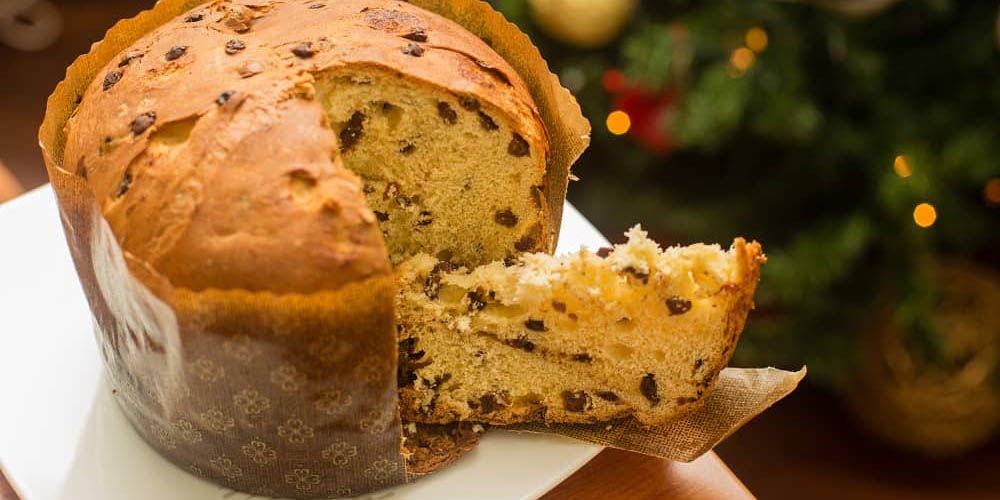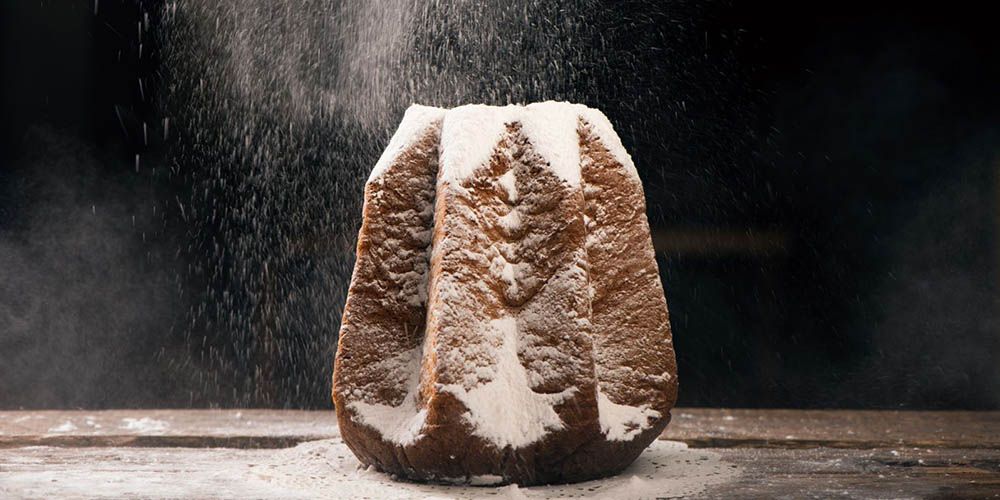In Italy we know, food is sacred and good eating is a religion. So, even in the Christmas season, Italian tables never lack delicacies of traditional regional recipes, but we divide on the choice of traditional dessert: better panettone or pandoro?
A question apparently simple but Italians are divided into two factions, the panettone lovers, rich of raisins and candied, symbol of abundance and happiness; and whose prefer pandoro, simple but rich in butter and eggs, with its distinctive star shape.

Pandoro Vs Panettone

Pandoro and panettone are the symbolic Christmas sweets. In Italy they are extremely popular and in recent years they have also become so abroad. In the Bel Paese they appear on all the tables set during the Christmas holidays and are dragged into the following period with the sales proposed by supermarkets. Let's go and see what distinguishes these two famous sweets and why one of the two seems to be the favorite on the tables of Italians.
At first glance the first distinctive element is the shape, the panettone has a round shape and a brown surface, usually we find it in a dark brown paper mold; the pandoro instead has the particular star shape, characterized by eight points. They are both caloric and energetic foods, but between the two the panettone is definitely lighter. They are both delicious but in recent years the Italians have preferred the panettone. Let's take a closer look at the ingredients and the history of these two famous traditional sweets.
The Milanese panettone: its origins and its variants

The origin of panettone, the genuine sweet of Lombard cuisine and the city of Milan, is very ancient, and dates back as far as 1400. It is said that a chef in service at the court of Ludovico il Moro had mistakenly burnt the cake to be served at the end of a lunch, and, without it, served a dessert of a helper, Toni, prepared with what had remained in the kitchen: flour, eggs, butter, raisins and citron peel. The cake was much appreciated and was called with the name of its inventor, “pan del Toni” (Toni's bread), from which the name today panettone. Another legend sees the panettone protagonist of a love story between Ughetto, noble falconer of the Duke, and Adalgisa, daughter of a humble baker, Toni, in precarious economic conditions. Ughetto proposed to help the father of his beloved and prepared a sweet bread enriched with raisins and dried fruit; this bread was so successful that it raised the fate of the baker and allowed the two lovers to crown their dream of love.
Truth or legend, panettone is the most classic Christmas cake, with a unique flavor and an unmistakable scent. Not everyone actually likes candied fruit inside, so that today many confectionery companies offer variations only with raisins, or with delicious chocolate or cream fillings in various flavors. There is also a classic variant, Verona panettone, which has glazing with almonds on the surface.
Treat yourself to a tour of MilanPandoro of Verona: the aristocracy’s cake

About the origins of the pandoro, someone tells it was already known in the Ancient Rome, about what already told Pliny the Elder (I sec. d.c.), talking about a “panis” (bread) made with flour, butter and oil. Others trace the pandoro to the Renaissance, when in the courts of the Venetian nobles it was used to cover the food with thin gold leaves, from which, therefore, the name “pan de oro” (golden bread).
The ancestor of the pandoro was the “nadalin”, a very simple cake prepared by the Veronese; Verona is actually the birthplace of this sweet with the typical star cone shape, rich in butter and wrapped by a cascade of delicate powdered sugar. The pandoro is definitely preferred by children for its simple taste, and is often used for the preparation of other sweets, with chocolate or fruit filling, ice cream and as best suggest imagination and delicacy.
Treat yourself to a city tour of Verona…Which one do you prefer?

It is really hard to choose between the two contenders on the Christmas table. On the one hand the panettone, high, soft, fragrant and rich in raisins and candied like precious stones of a noble texture; on the other hand, the pandoro. Soft, fragrant, almost a taste of paradise at every bite. We decided not to appoint a winner; at Christmas, you know, calories do not count, so let’s eat both! Whether you prefer Pandoro or Panettone or their infinite variations Visit Italy recommends excellence: Madò Pasticceria.
Madò is Italy's first online artisan pastry shop, the brainchild of two young people: Domenico (27), a digital entrepreneur, and Maria Rosaria (25), the third generation of a family of pastry chefs. Madò offers you the chance to enjoy a panettone or pandoro directly at home. In Italy there is no Christmas without panettone and pandoro. Enjoy it!
About the author
Written on 11/12/2019



Valentina Loporchio
Better Panettone or Pandoro? Which one is the most preferred Christmas cake by Italians?